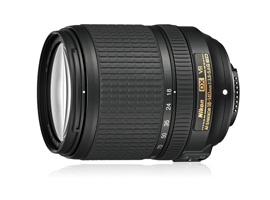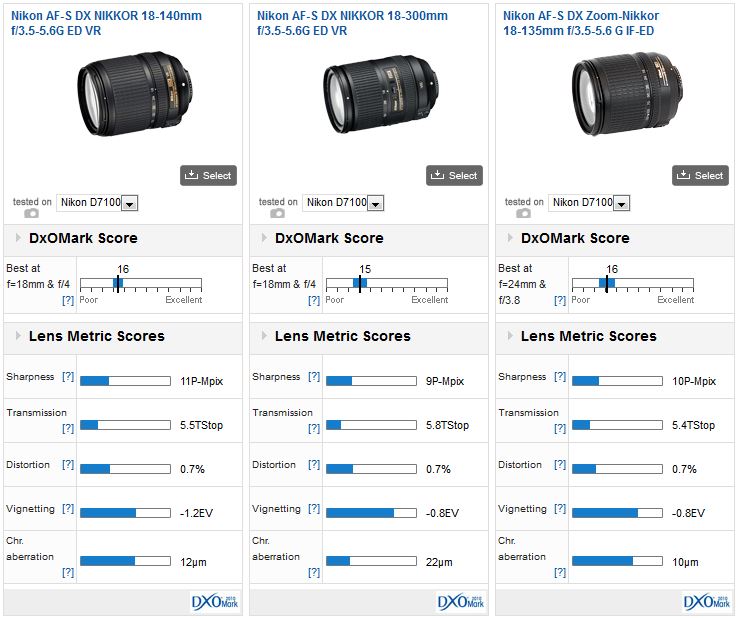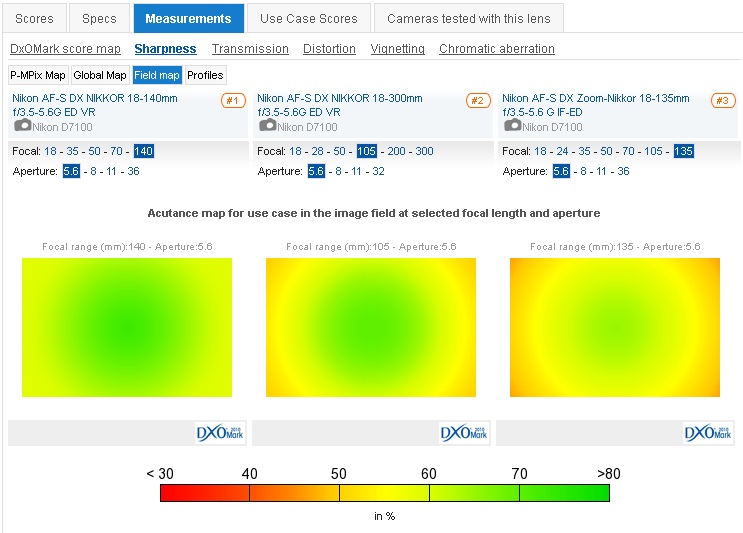Introduction
When we analyzed the optical performance of the earlier Nikkor 18-135mm f/3.5-5.6G IF-ED on the new Nikon D7100, we discovered that the modestly priced ($480) ‘super-zoom’ was the best in its class. Since then we’ve had the opportunity to put the latest version of that lens, the stabilized Nikkor 18-140mm f3.5-5.6 ED VR model through our usual tests in our labs.
At $600, the new model caries a price premium over the similar looking 2006 version. But, it does now feature built-in optical image stabilization, in addition to the usual ultrasonic type AF motor. It also has a more durable metal mount over the plastic type found on the older model.
The new version retains internal focusing (IF) and includes a fairly complex optical construction. It consists of 17 elements, arranged in 12 groups with one ED glass element and one element with an aspherical surface for chromatic aberration correction.
While the new model is larger (78x97mm vs. 73.5×86.5mm) and heavier at 490g (vs. 385g), in other respects 18-140mm and earlier model are similar. Both focus down to 0.45m regardless of focal length, and have seven aperture blades with a rounded opening and share the same 67mm filter diameter.
With a very good overall DxOMark lens score of 16 points, the new model doesn’t disappoint. In fact, the overall image quality is similar to the previous iteration, but with an 11P-Mpix score for sharpness on the Nikon D7100 the new model has improved sharpness levels. As a result, this is the sharpest ‘super-zoom’ for Nikon DX format cameras in our database, and one of the best optical performers of its type.
Distortion can be a problem in a high-ratio zoom like this, but at 0.7% Nikon as done well to keep it under control. Vignetting and chromatic aberration are also well controlled. However, when set to 18mm chromatic aberration is noticeable in the extreme corners at all apertures. Shading is also visible at both ends of the zoom range, again in the furthest corners of the frame.
Nikkor 18-140mm f3.5-5.6 ED VR versus competition
As well as comparing the two models, we’ve also compared the image quality of the new-ish Nikkor 18-300mm f3.5-5.6G ED VR. Although this is a higher-grade ($999) mode with a truly impressive 16.7x zoom ratio, that capability will inevitably limit the optical performance.
The fact that it does well against the more modest 18-140mm f3.5-5.6 is evidence of the maker’s technical know-how. Still, the 18-140mm has the higher overall IQ and better sharpness levels overall. The 18-300mm also has disappointingly high levels of chromatic aberration, corresponding to six pixels at 1:1 on-screen. That said, it’s not unexpected in a model that pushes the current boundaries.
Against the earlier 18-135mm model, the new lens performs very similarly overall. Any increase in sharpness is always welcome, even if it results in a slight increase in chromatic aberration and shading, as it has done in this particular instance.
More importantly, the new model has more uniform sharpness across the image field. The improvement is visible at various focal lengths and apertures, including the tele-end where it’s all the more difficult to achieve.
We were very impressed by the previous iteration of this lens, but the new model is even more impressive overall. Nikon has not only increased sharpness levels, perhaps more importantly; uniformity has been improved throughout the zoom range and at all aperture settings.
While the lens has seen a jump in price up to $600, from $480, there has been a significant improvementin optical performance. That and inclusion of stabilization counter the price premium, making the new 18-140mm a promising addition to the range.












DXOMARK encourages its readers to share comments on the articles. To read or post comments, Disqus cookies are required. Change your Cookies Preferences and read more about our Comment Policy.